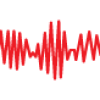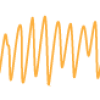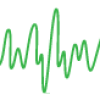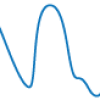QEEG Brain Mapping How we Determine Your Condition
With A QEEG Brain Scan
How Do We Know Which Areas Of The Brain To Train?
This is achieved with a Quantitative Electroencephalography (QEEG), also known as a brain map. A Brain Map is a non-invasive tool we use to identify the problem areas of the brain. The QEEG is designed to objectively and scientifically evaluate a person\’s brainwave patterns. It takes the guesswork out of determining a person\’s condition. Think of a QEEG Brain map like a weather map…it provides us with accurate information about the entire brain and where problems may lie.
We place what looks like a swim cap with a number of sensors on your head to measure the brain wave activity of the various frequency bands. The process is non-invasive and takes about 20 minutes to complete. The system then compares your brainwave activity to a database of established standards of normal brain function to determine if problems are present.
The comparison is both age and gender stratified meaning we are comparing apples to apples. It does not identify specific conditions: It shows a map of problem areas in the brain that we can use to expertly determine likely neurological conditions.

What Does A Brain Map Have To Do With Neurofeedback?
While neurofeedback is the training mechanism we use to correct brain imbalances, a brain map is the diagnostic tool we use to determine where problems lie within the brain. The customized report creates an accurate snapshot of your brain activity.
The brain map will generate a list of training protocols to target the areas of the
brain most in need of help. Over time and with multiple sessions, the brain will correct
itself and learn to self-regulate on its own. Neurofeedback results are often permanent
and no further training should be needed.
(Normal Price $395)
Why Brainwaves Are Important
Brainwaves are extremely important to how we function. There are 4 main brainwaves, and each of them regulates a different part of our body. From sleep to emotions to critical thinking, we would not be who we are without our brainwaves. Let\’s learn about each one.
WANT TO KNOW MORE?
Our system is approved by the Food and Drug Administration. In fact, the FDA recognizes that neurofeedback has NEVER produced a serious side effect since it was first discovered over 40 years ago. There are also thousands of research articles and personal testimonials that prove it effectiveness.
What Is Neurofeedback?
Learn more about this groundbreaking system and how it can help you!
QEEG Brain Mapping
See inside the brain and accurately identify issues! Learn how this process works.
Patient Testimonials
Watch videos from patients who have had success with neurofeedback.
Research / Case Studies
Professional research and case studies for most neurological conditions
Contact Us
(Normal Price $395)




